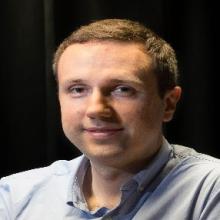Monday, February 05, 2024 | 12:00 - 1:00 PM
Join your colleagues for coffee & treats starting at 11:30 am
NIH NEUROSCIENCE SEMINAR SERIES
When: February 5, 2024, 12:00 – 1:00 pm
Presentation: Cortical circuits for spatial navigation
Speaker: Christopher Harvey
Where: Porter Neuroscience Bldg., Room 620/630.
NIH Host: Yi Gu, NINDS
Please contact Dr. Gu if you wish to meet with the speaker.
* If you are unable to attend, Dr. Harvey’s seminar will be available for later viewing by NIH employees at NIH VideoCasting - Past Events
ABOUT THE SPEAKER
Image

Christopher D. Harvey, PhD
Professor of Neurobiology
Harvard Medical School
Research
The goal of our research is to understand how decision-making and working memory behaviors are implemented by neuronal circuits in the mammalian cortex. In many daily behaviors, we use sensory information from our surroundings to choose between multiple alternatives and to guide our future actions. For example, when walking along a street, we use visual landmarks to decide and plan whether to turn right or left at an upcoming intersection to reach our destination. Our laboratory is interested in the microcircuit and cellular mechanisms of how sensory evidence is used to guide behaviors through perceptual decision computations in mouse cortical circuits. We focus on the posterior parietal cortex (PPC), which is at the interface of sensation and action and is thought to be important for decision-related processes. Our current research involves a variety of approaches toward developing a mechanistic and biophysical understanding of PPC function in mice during decision and working memory tasks, including: 1. Experiments to identify the principles of the activity dynamics in neuronal populations to understand how computations in the microcircuit are performed; 2. Studies to measure and manipulate the functions of specific classes of cells, including genetically- and anatomically-defined classes, to examine the roles of different components in the circuit; and, 3. Experiments identifying the relationship between the synaptic connectivity and activity patterns of neurons to understand how components in the circuit are linked, both within the PPC and with other brain areas. Experiments in our laboratory are centered around a recently developed virtual reality system in which mice can navigate through visual virtual environments. This system allows us to train mice to perform perceptual decision-making tasks and to probe circuit function during these tasks using a wide range of optical, electrophysiological, genetic, and anatomical methods. For example, in behaving mice, we use two-photon imaging of genetically-encoded indicators to monitor dynamics in neuronal populations and whole-cell patch-clamp recordings to measure the synaptic and cellular function of individual neurons. In addition, we have a continuing interest in developing new approaches to record neuronal activity in behaving mice and in expanding the set of decision-making behavioral paradigms for mice.
"Our laboratory is interested in the microcircuit and cellular mechanisms of how sensory evidence is used to guide behaviors through perceptual decision computations in mouse cortical circuits."
|
DATE
|
SPEAKER
|
HOST
|
SEMINAR TITLE
|
|
Feb. 12
|
Annegret Falkner
|
Michael Krashes
|
Mapping the neural dynamics of social dominance and defeat
|
|
Feb. 26
|
Mazen Kheirbek
|
Hugo Tejeda, Lorna Role
|
Representing rewarding and aversive experiences in hippocampal circuits
|
|
Mar. 4
|
Antonina Roll-Mecak
|
Claire Le Pichon
|
TBD
|
NIH Neuroscience Seminar Series Webpage:
Series Supported by the NIH Neuroscience Scientific Directors
